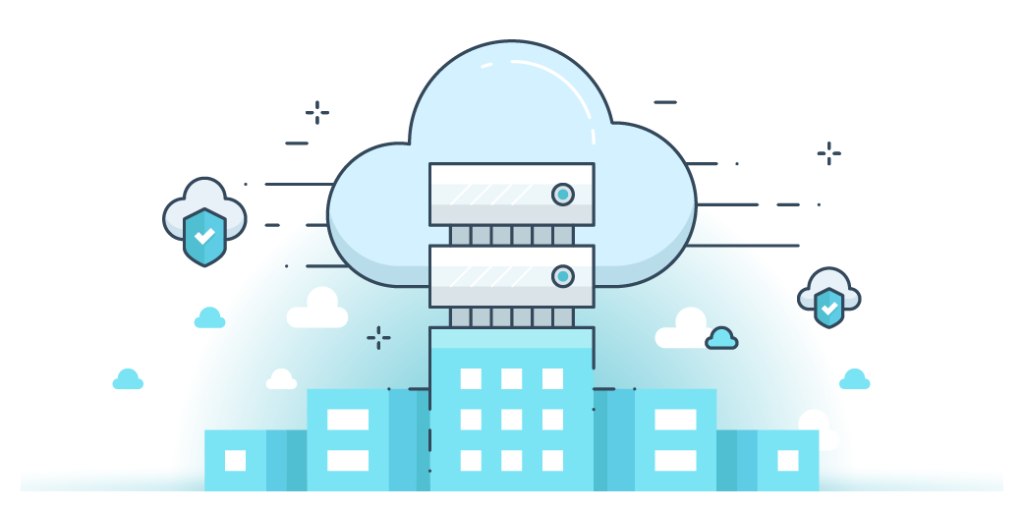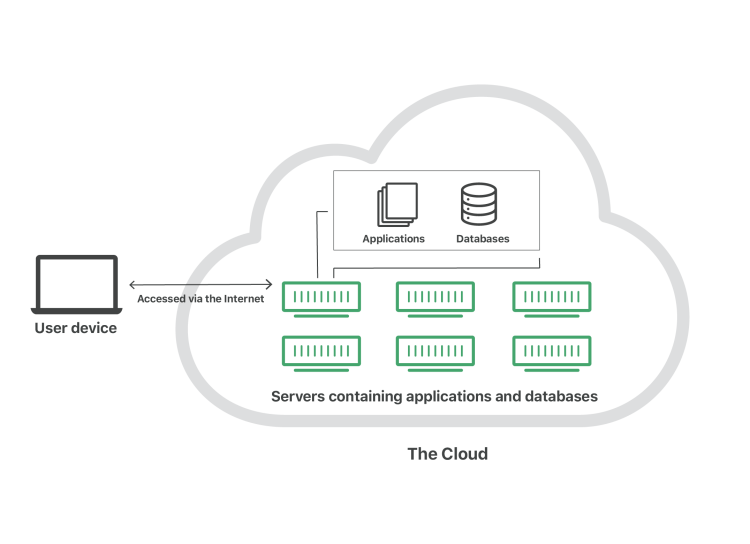
The term “the cloud” refers to Internet-accessible servers, as well as the software and databases that run on those servers. Cloud servers are housed in many data centres across the world. Users and businesses don’t have to operate physical servers or run software programs on their own workstations when they employ cloud computing.
Because the computing and storing takes place on servers in a data centre rather than locally on the user device, users can access the same files and programs from nearly any device via the cloud. This is why, once a user’s old phone breaks, they may log into their Instagram account on a new phone and find their old account, complete with all of their photographs, videos, and chat history, still exists. It works with cloud email services like Gmail or Microsoft Office 365, as well as online storage services like Dropbox or Google Drive.
Switching to cloud computing reduces some IT costs and overhead for businesses: for example, they no longer need to upgrade and maintain their own servers because the cloud vendor will do so. This has a significant influence on small firms that may not be able to finance their own internal infrastructure but can outsource their infrastructure needs to the cloud at a reasonable cost. Because employees and consumers can access the same data and applications from any place, the cloud can make it easier for businesses to function abroad.
How does cloud computing work?
Virtualization is a technique that makes cloud computing possible. Virtualization allows you to create a simulated, digital-only “virtual” computer that acts like a real computer with its own hardware. A virtual machine is the technical word for such a computer. Virtual machines on the same host machine, when properly implemented, are sandboxed from one another, so they don’t communicate at all, and the files and apps from one virtual machine aren’t accessible to the other virtual machines, despite the fact that they’re on the same physical machine.
Virtual machines also make better use of the hardware on which they run. One server becomes many servers, and a data centre becomes a whole host of data centres capable of serving numerous enterprises, by running many virtual machines at the same time. As a result, cloud providers may provide access to their servers to considerably more customers at once than they could otherwise, and at a lower cost.
Even if individual servers fail, cloud servers as a whole should remain online and accessible at all times. Cloud providers typically back up their services across many machines and geographies.
Users access cloud services via a browser or an app, connecting to the cloud via the Internet — that is, a network of interconnected networks — regardless of the device they are using.
How is the cloud different from the traditional client-server model of the Internet?
Servers, clients, and the infrastructure that connects them have always been the foundation of the Internet. Clients send requests to servers, which the servers respond to. Cloud computing departs from this model in that cloud servers do more than simply react to queries; they also run programs and store data on behalf of the client.
Why is it called ‘the cloud’?
“Cloud” began as a slang term in the tech industry. Technical representations of the servers and networking equipment that make up the Internet as a cloud were common in the early days of the Internet. People began to refer to shifting to “the cloud” as a shorthand method of conveying where computing operations were taking place as more computing processes migrated to this servers-and-infrastructure area of the Internet. The term “cloud” is now extensively used to describe this type of computing.
